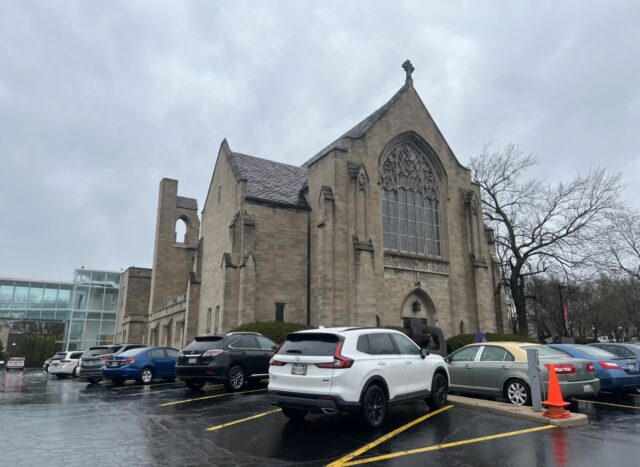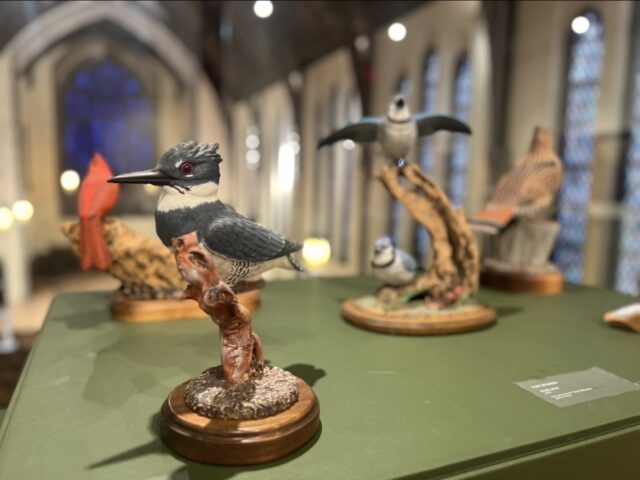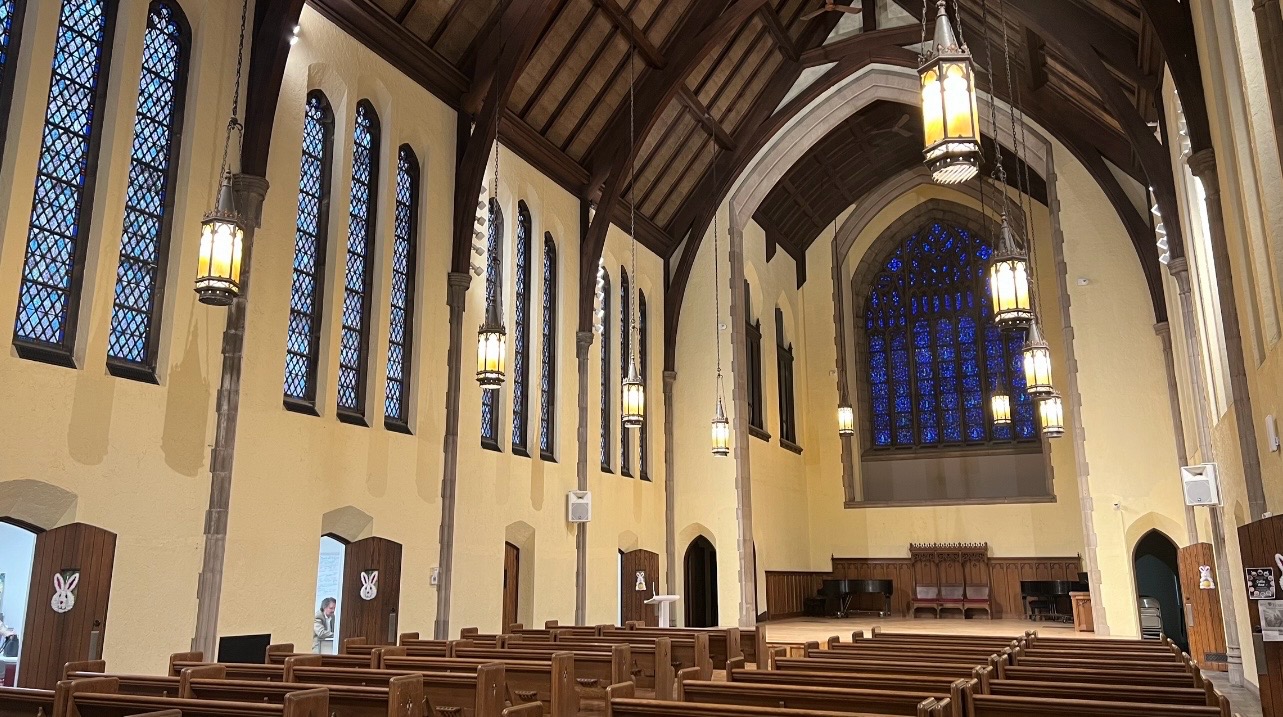By Molly Burke
Jambar Contributor
Youngstown State University’s campus is home to one of the oldest churches in the Mahoning Valley. Today, the church no longer houses a congregation but some of Youngstown’s finest art pieces.
Located on Wick Avenue across from Bliss Hall, First Christian Church was built in 1933. Eighty years later, the building was repurposed as the Butler Institute of American Art’s North Annex.
Joyce Mistovich, director of art education at the Butler, said the church was designed by Otto King, a graduate of the Carnegie Institute of Architects. Visitors can still sit in its pews and gaze at its stained glass windows.
“What we have tried to do with this space is keep it as historically close to what the original structure was as possible,” Mistovich said. “It is a challenge upkeeping a space that is close to almost 100 years old … it’s crying for renovation.”
The Butler purchased the building in 2013 after First Christian’s congregation merged with another church in Boardman. That same year, Poland-based architect Bob Buchanon designed the Bitonte Skywalk to bridge the museum and its new annex.
With its rows of pews and raised floor for an altar, Mistovich said Butler North is perfect for performances, including those hosted by YSU.
“This is not a church anymore, but it serves as a wonderful venue for weddings, concerts, Dana School of Music has concerts here,” Mistovich said. “The space is easily able to be rented out.”
Butler North’s upper level hosts several art exhibits focused around the theme of Americana, featuring carousel horses, textiles, paintings and some of Joseph Butler’s own model ships and bell collection. The space that was once the church’s choir loft is now home to a wood-carved birds exhibit.
In its ground floor level is the Butler’s education wing, where children and adults can take art classes and art teachers can attend workshops. Butler North also hosts the offices of the museum’s docents program, which provides volunteer guides to visitors.

Louis Zona, executive director of the Butler, said years before the Butler purchased the building, the church allowed YSU to use the basement for classroom space because the university didn’t have enough of its own. First Christian’s congregation chose between the Butler and YSU when it came to selling the building.
“Both were good options for the university,” Zona said. “It was offered to us and the cost was $400,000, which we were able to raise to acquire the church … it was an exciting time for me because of the obvious beauty of that church building.”
In a late-gothic revival style, the church’s walls are made of limestone with wooden arches repeated across the ceiling, where a dozen large chandeliers hang below. Above where an altar used to be is a large stained glass window designed by Henry Lee Willet of Willet Hauser Architectural Glass Co.
While the window has no specific symbolism, Mistovich said it was a highlight for the church and remains one for the Butler.
“There are 49 panels, and they form a checkerboard design … It alternates between shields, shapes and angelic figures and attitudes of prayer or grace,” Mistovich said. “It is this glorious mix of values of blues, accented by some reds and other primary colors that are predominant throughout the compositions of each of those squares of the windows.”
Zona said the building has received several upgrades since the Butler purchased it, including a protective plastic sheet over its window, installed by Willet Hauser.
“The classrooms are first rate,” Zona said. “Those galleries are beautiful and beautifully lit. Every which way that you turn to look, we’ve cleaned it up a little bit.”

Mistovich said the Butler also has plans to renovate the basement, which was also used as a cafeteria and meeting area.
“We’re looking at making that more of a maker’s space, like a steam-based space that will be innermarked for children and adults as well,” Mistovich said.
According to Zona, the Butler plans to put a permanent gallery of African American works in Butler North’s gallery space.


